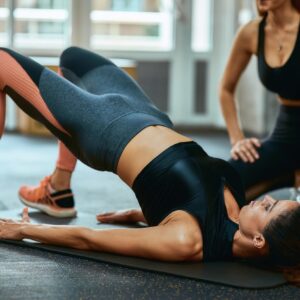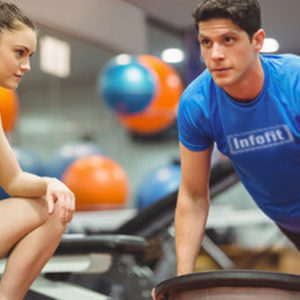Unilateral Training – Do You Need It?
Why You Should Use Unilateral Training
For many of us, the bulk of our training has been bilateral for many years. You do your squats, your deadlifts, your leg press, bench press, barbell or cable bicep and curls using both limbs at the same time. But there’s an increasing amount of evidence and consensus among strength coaches that unilateral (training just one limb) training can be extremely beneficial, and in different ways than conventional bilateral training.
Most of us have a stronger or more dominant side. As we train bilaterally, the stronger side tends to do slightly more work. As I am right-hand dominant, when I squat or overhead press my right side tends to do slightly more work. Over time, this can actually increase muscular imbalances. And there are studies[1] showing that muscular imbalances can lead to increased injury risk.
By training unilaterally (using only one limb or side of the body), we can improve these imbalances and help decrease our risk of injuries. For example, I could do a one legged squat—I’d still train both sides, but I’d do the same number of reps, same number of sets, and the same amount of weight on each side—which would force my weaker side to do the same amount of work as my more dominant limb.
Unilateral Training Increases Core Strength
Not only does unilateral training help fix muscle imbalances and reduce injury risk, studies[2] are also showing that unilateral training increases core strength. Unlike bilateral exercises, many unilateral exercises have a substantial balance component. There are some obvious examples, such as my favourites: one-legged squats or one-arm dumbbell bench press. And not only does increased core strength have great benefits for everyday life, it’ll also help you handle the load better when you do your bilateral work! And increasing your core strength through unilateral work will not only improve your overall fitness and health, it will make you that much stronger on your bilateral lifts
Unilateral training can also help reduce injuries by decreasing the load on the spine. As acclaimed strength coach Mike Boyle said recently, “we just [have]too many guys with sore backs and sore knees”. Most athletes are only capable of doing about 30-40% of the work with a unilateral exercise that they would with the bilateral equivalent. So, doing a one-legged squat or deadlift will have a far smaller load on the spine, and as mentioned earlier it will also increase strength in the core, allowing a greater load on the spine when that athlete is ready for it.
Unilateral Training Can be Great for Injury Rehabilitation
Finally, unilateral training can be great for injury rehabilitation. As we train one side, the other side actually gains strength through what’s known as the cross-education effect[3]. So, if you’ve injured your right side, you can still gain strength and skill in that side even if you’re only able to train the left! A word of caution for contact sport athletes though—if you train unilaterally, you’ll likely feel fitter and ready to return to training before your doctor clears you. However, it’s in your best interests to wait to return to contact until cleared by your doctor. And yes, I may have learned that lesson the hard way…
Convinced? Talk to your personal trainer about incorporating unilateral exercises into your programming!
Best of luck hitting your fitness goals!
Written by Kru Chase Degenhardt
Kru Chase Degenhardt is a former champion in multiple combat sports with over fifteen years of experience training combat athletes.
[1] https://scholar.google.ca/scholar?hl=en&as_sdt=0%2C5&q=muscle+imbalance&btnG=
[2] https://pubmed.ncbi.nlm.nih.gov/21877146/
[3] https://pubmed.ncbi.nlm.nih.gov/29668382/



